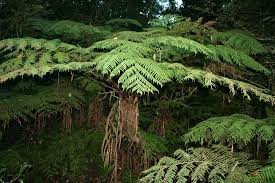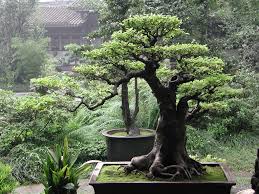OVERVIEW: Good summery of palms that do well in cold climates.
Cold Hardy Palm Trees For Northern Garden Planting. Author: Pat Malcolm
Palm trees were once thought to be suitable for planting only in tropical landscapes, however, several cold hardy palm trees occur naturally, growing in America, where snows fall during winter. The windmill palm tree, Trachycarpus fortunei; the Dwarf Palmetto palm tree, Sabal minor; the Saw palmetto, Serenoa repens; and the Sabal Palm, sabal palmetto; and the Needle Palm, Rhapidophyllun hystrix; Much of the information that is published in book from, magazine articles and Internet websites is extremely conservative, perhaps because the testing for national cold hardiness is of a recent origin; and also temperature fluctuations caused by global warming increases the survival rate of palm tree plantings in recent years. Try buying a few palm trees in your garden to plant and grow. Very large specimen palm trees can be purchased for semi-truck fast delivery at a few Internet nursery websites.
The Windmill palm tree, Trachycarpus fortunei, also is called a Chusan palm and a Chinese Windmill palm tree, was imported from Japan, perhaps first, into the United States, but most botanists believe that this palm tree originated in China, where many seed and specimen trees were purchased to import into the US. Windmill palm trees are a common landscape sight throughout Europe, the United States, and Canada. These Windmill palm trees are very cold hardy, and can be see flourishing along the city streets of Lake Lucerne, Switzerland, where the palms grow up to 40ft in height. The slender, graceful trunks are covered with brown-black fibers that appear as hair from a distance, and with aging, the fibers turn gray, and on large old trees the fibers fall off to reveal a slick beautiful trunk. The waxy leaves are bright green above and silver-green below; growing 2 feet long and 2 feet wide, smaller than most other palm trees. Windmill palm trees grow a flower stalk 2 feet long, with yellow, pleasantly aromatic flowers developing into ½" long blue fruits.

Windmill palm trees, Trachycarpus fortunei, are so cold hardy that semi-truck loads of large specimen sized trees have been nursery distributed for customers in Canada who wish to buy a palm to place in a tropical landscape design. The famous Cloister Hotel at Sea Island, Georgia plants grouping of large Windmill palms, some 20-30 feet for planting near entrances and landscape positions close to buildings. Windmill palms are tolerant of salt water spray and are very adaptable for planting and growing in most areas of the United States.
The Dwarf Palmetto palm tree, Sabal minor, is not a fast growing plant, and gorws abundantly in pine tree forests, and in poorly drained lowlands. Innumerable colonies of dwarf palmetto palm grow next to the highway between Albany, Georgia and Blakely, Georgia on swampland, that is under water periodically, and the dwarf palmetto palms grow in very heavy shade. Native to the Southeastern US, this palm grows small trunks that remain hidden behind the leaves. The flower stalk grows four to six feet, and white flowers grow into one-half inch, black fruit. This extremely adaptable palm tree is drought tolerant, and popularly is grown as a native, landscape specimen shrub or in rows as a privacy screen. This dwarf palmetto grows beautiful, pest resistant leaves, and can be seen growing as a salt water resistant plant in large landscape borders of Sea Island, Georgia, where land purchasers value the natural appearance and incorporate the plant into landscape designs.
Saw palmetto, Serenoa repens, is one of the native Southeastern plants that has become the rage for planting as a cold hardy palm in Northern States, where it can survive temperatures of -10 F. The beautiful blue or green colored leaves are shiny and waxy, growing about five feet long. The flower stalk grows 3 feet long and appears in the heat of the summer, covered with white flowers that form blue fruit one inch in diameter. The saw palmetto palm tree is very adaptable for cold hardy growing in Northerne states, where temperature extremes damage most other palms. These palm trees are grown mostly as clumping shrubs in naturalistic landscapes. You should buy large Saw palmetto palms, as they do not transplant well and should be planted and grown from a container plant nursery. Very exotic trunks form on century old Saw palmetto palms, that can be seen growing on the sand dunes next to salt water waves spraying the leaves at Sea Island, Georgia. Trunks on these trees had the lower leaves removed to reveal trunks 4ft long that can grow parallel to the ground or at right angels or twisted. All palm tree trunks obviously shaped by storms or hurricanes, that may have blown over the plants rooted in the sand, only to regrow at a different angle. These palm trees must be seen to appreciate a dune of sand landscaped properly.
The Cabbage palm tree (Sabal palmetto) is also called the Sabal Palm, and is believed to be the most commonly planted palm tree in the Southern US. This palm tree is native to that area, and grows in forests throughout Florida and coastal Georgia. The Cabbage palm tree can grow to 40 feet, but only grows about one foot per year. Upon aging, the lower leaf stem remains (petioles) attached for many years, giving the trunk a bazaar, forbidding appearance. After many years, the leaf remains can be removed artificially, or naturally, giving the trunk a slick, desirable look in the landscape. During hot weather, white flowers grow fast, to 6 feet long, to produce one-half inch black fruit that fall to the ground. Sabal palm trees grow as far North as coastal Virginia, and Carolina landscapes, and are cold hardy to below zero temperatures. This Cabbage palm is drought resistant, requires little care or growth maintenance when planted in the landscape, and is so salt water tolerant, it can be found growing along the sea coast, sometimes falling into the ocean with sea erosion.
Sabal palm trees are considered as the State tree in Florida and South Carolina. Because Sable palm tree roots do not branch like other palms, transplanting the tree can be difficult unless the leaves are all removed before transplanting into home landscapes, and since they are not fast growing, it is not unusual for the palm tree to require 3 to 4 years to regrow the canopy leaves to normal size. The cabbage palm is also susceptible to hurricane damage, because its roots are not largely branched like other palm trees to anchor the trunk into the earth.
The Needle Palm, Rhapidoe phyllum histrix, is native to the Southeastern United States, and is considered to be one of the most cold hardy palm trees growing in the United States. Buyers find it difficult to purchase this palm tree, because it has been removed from most of the forests, where it is not a fast growing palm tree. Large trunks up to 4 feet tall are rare, and very expensive, costing each thousands of dollars. But, this needle palm has survived minus 10 degrees F at the Brooklyn Botanical Garden in New York for many years, unaffected by the snow and cold temperatures. The leaves are two feet long and 4 feet wide, and the trunk is dangerously armed with white, sharp, 5 inch needles, easily being detached from the trunk, with the overall appearance like that of a porcupine. Even though the needle palm trees hundred of years old are expensive, it is possible to buy smaller plants at reasonable prices for fast shipment at many Internet nursery websites.
About the Author:
Patrick A. Malcolm, owner of TyTy Nursery, has an M.S. degree in Biochemistry and has cultivated palm trees for over three decades.
Article Source: ArticlesBase.com - Cold Hardy Palm Trees For Northern Garden Planting
[cold hardy palms] [palms for cold climates] [palm trees] [tropical garden] [tropical trees] [tropical landscaping]









No comments:
Post a Comment